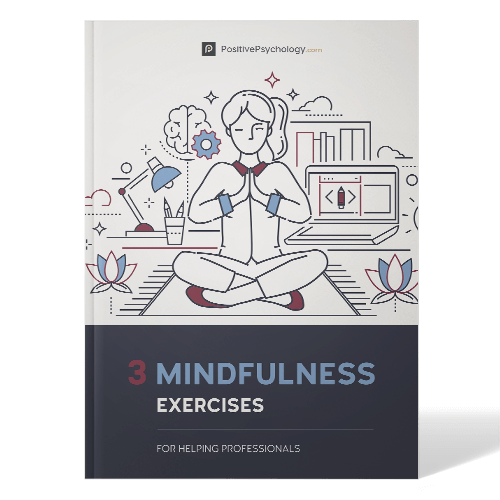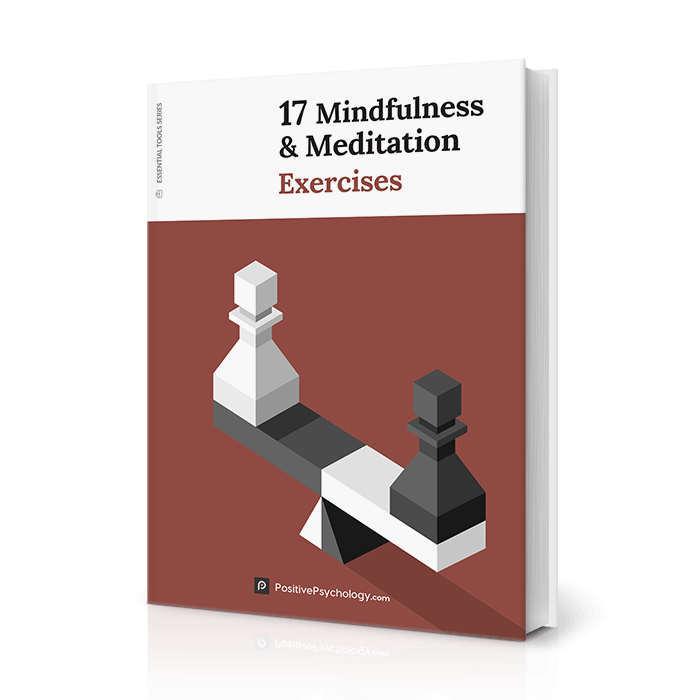Mindful Walking & Walking Meditation: A Restorative Practice
 The evocatively named forest bathing (or shinrin-yoku) surfaced in Japan in the 1980s as both a treatment for burned-out technology workers and a way to reconnect the population with the country’s extensive network of forests.
The evocatively named forest bathing (or shinrin-yoku) surfaced in Japan in the 1980s as both a treatment for burned-out technology workers and a way to reconnect the population with the country’s extensive network of forests.
Perhaps unsurprisingly, it turns out that immersing yourself in nature and mindfully using all five senses – touch, sight, hearing, smell, and taste – has many health benefits.
Shinrin-yoku closely follows earlier principles gained from other meditative practices that continue to guide the mindfulness movement.
Indeed, science has found similar, positive rewards for our mental and physical wellbeing from mindfulness-based stress reduction techniques such as mindful walking.
While shinrin-yoku requires a setting of natural beauty, mindful walking can be performed anywhere, so long as the walker remains present. If the walk is mindful, a busy thoroughfare is equal to an idyllic woodland setting.
That is the wonder of mindfulness – it does not matter where you are physically; it is where you are mentally that is important.
Within this article, we will introduce you to the ideas and practices behind mindful walking along with the potential benefits to your psychological and physiological wellbeing.
Before you continue, we thought you might like to download our three Mindfulness Exercises for free. These science-based, comprehensive exercises will help you cultivate a sense of inner peace throughout your daily life and also give you tools to enhance the mindfulness of your clients, students, or employees.
This Article Contains:
Mindful Walking Explained
For many of us, walking is something we do when a car journey is not possible or practical. We may even consider it a chore.
And yet, the very act of walking upright sets us apart from most of the animals on our planet. In a very literal sense, it is part of who we are. Moving through the world in this way is part of what it means to be human.
Indeed, walking is so ubiquitous that we often fail to notice it. But it’s there, available to all of us so long as our health allows.
During mindful walking, our journey is less about the destination and, while avoiding ‘distracted autopilot,’ more about bringing awareness to this everyday activity.
Like most mindful activities, it can be performed anywhere: a country lane, a mountain top, or a bustling street.
To the mindful, when in a state of appreciation, the experience of early morning sunlight hitting a dirty puddle on a city street is equal to the setting sun in a mountain scene.
“Happiness is looking at the same things with different eyes,” say Professor Mark Williams and Dr. Danny Penman in Mindfulness: A Practical Guide to Finding Peace in a Frantic World (2011). And they are right.
Rather than the outing to the local store being an annoyance to be hurried through, feet trudging along the footpath, it becomes a restorative feast of the senses. A walk to the bus stop or taking the dog out, when combined with an appreciation of the here and now, becomes a ready-made mindfulness session.
But how do you walk mindfully?
As you walk, pay attention to the sensations of the body. How do your feet feel? How do the other muscles of your body compensate for changes in balance? Note how your arms swing as you walk.
Become more aware of your surroundings, not just practically (I must avoid the puddle or mail the letter on the way), but with an open mind, enjoying the immediacy of the sights, sounds, and smells. Open up your senses.
Mindful walking benefits from its simplicity and is most successful when you are in the moment.
No tools or equipment are required, only somewhere to walk. And it can easily fit into your daily routine.
18+ Benefits of Mindful Walking
We spend much of our lives sitting down in front of computers and TVs. Such sedentary behavior was not always the case, and it is not what we evolved to do.
Indeed, Dennis Bramble and Daniel Lieberman (2004) suggest that humans are designed for endurance, with highly specialized features that significantly contribute to who we are today.
In the absence of physical demands, the impact on our body and mind is profound: muscle loss, increased obesity, heart disease, and poorly functioning mental health.
Exercise helps. And walking can be performed by most of us, without training, equipment, or even a base fitness.
Most of us acknowledge that walking can often ‘clear our heads’ and gives us the time we need to hear our thoughts or those of our companions.
And it is also true that when we are confronted by a problem that we can’t seem to resolve, the very act of walking in the open air seems to bring about an answer of which we were previously unaware.
Benefits of walking
Walking is hugely beneficial to the health of the general population. So much so that the World Health Organization lists it as one of their daily recommended activities.
The advice, based on substantial scientific evidence, is that the more active we are, the:
Lower the risk of:
- Coronary heart disease
- High blood pressure
- Stroke
- Type 2 diabetes
- Metabolic syndrome
- Colon and breast cancer
- Hip or vertebral fracture
Greater the likelihood of:
- Higher cardiorespiratory and muscular fitness
- Achieving weight maintenance
- Maintaining a healthier body mass and composition
And, for our mental health, physical exercise reduces depression, reduces stress, lifts overall mood, and improves cognitive function.
So, the physical benefits of walking are far reaching. But what about the addition of mindfulness?
Combined benefits of mindful walking
When we combine the benefits of walking with mindfulness, we witness a perfect storm of improvements to psychological and physiological wellbeing (Tsang, Chan, & Cheung, 2008).
And, along with the surge in the popularity of mindfulness techniques in the general population, mindful walking has received considerably more research attention in the last 10 years.
Mood and mindfulness
A 2016 study exploring the impact of mindful walking over multiple days noted improvements in mood and mindfulness skills.
And more specifically, the practice reduced depression, anxiety, stress, and brooding (Gotink et al., 2016).
Physical stress and quality of life
When a group of individuals who self-reported as having high levels of psychological distress were given eight mindful walking sessions over four weeks, the effect was striking. Symptoms of physical stress dramatically reduced, and their quality of life significantly increased (Teut et al., 2013).
Physical and mental benefits
While you can perform mindful walking anywhere, when practiced in nature, such as with shinrin-yoku, the physical and mental benefits are far reaching.
A review of 127 research papers identified that ‘forest bathing’ provides an essential antidote to the stresses and strains of modern life (Hansen, Jones, & Tocchini, 2017).
Those taking part can expect improvements to their:
- Immune system function
- Cardiovascular system
- Respiratory system
And
- Depression and anxiety
- Mental relaxation
- Feelings of “awe”
In those studies that performed follow-ups, the benefits after mindful walking interventions ended were still present but reduced with time.
So, if you want to retain the wealth of mental and physical gains, mindful walking, whether in an idyllic countryside or more mundane urban environments, should be continued.
How to Begin Practicing It
While mindful walking has no single definition, the goal is clear: to be consciously aware while moving through the environment.
The journey becomes less about the destination and more about an awareness of what is outside and inside us. When moving – perhaps to an even greater degree – it is possible to find stillness, to become aware, and be present.
The steps that follow describe how to perform mindful walking:
Preparation
- Find somewhere safe to walk where you will not be disturbed: your garden, a city park, country lane, or a busy street – are all equally good.
- Wear comfortable clothing and shoes for walking.
- Stand still and become aware of how you feel.
- Consider your posture, the weight of your body, feet in your shoes, and your muscles as you balance.
- Take a few deep breaths and slowly bring your awareness into the present.
The movement
- Begin walking, a little slower than normal.
- Walk as mindfully as you can.
- Maintain awareness of:
- Each footstep as it rolls from heel to toe
- The muscles and tendons in your feet and legs
- The movement and muscles elsewhere in your body
- Pay attention to your senses as you walk:
- Hear the wind blow in the trees
- Smell the cut grass
- Feel the light touch of rain on your face
- See the car lights reflected on the windows of shops, the shadows moving as you walk
- Be aware of each breath.
- Breathe easily, but deeply.
- When your mind drifts from walking and breathing, gently guide your thoughts back.
- Continue walking for as long as you feel safe and comfortable.
Remember, wherever you walk, whether a bustling street or a windy hillside, there is a myriad of stimuli with which to flood your senses.
Become aware; savor the sensations.
The finish
- When your meditation is at an end, stop and stand still.
- Take a few deep breaths.
As with all mindfulness practices, your skills will improve with practice, and the audio recordings and apps that follow will help.
Mindful walking meditation (20 minute guided practice)
8 Scripts, Audio, and Apps
Scripts, audio, and apps will help you learn and perform mindful walking.
Taking a script with you is likely to be impractical; it also adds to your risk of falling. So, review the instructions before heading out, then download a podcast or app to guide you along your journey.
Take care and ensure that you maintain awareness of potential dangers (for example, cars, bicycles, and other pedestrians).
Audio
The following recordings will step you through mindful walking:
10-minute walking meditation
This excellent podcast lasts less than 10 minutes and can be repeated, if required, for a longer walk.
Suitable gaps are provided after each guidance to allow time for the listener to experience each of the senses.
Bupa mindful walking sessions
The healthcare specialist Bupa provides a set of useful mindful walking meditations to guide you through your walks.
The recordings vary in the length of the interval between each practice: 30 seconds, one, two, and three minutes. Find one that suits you.
Mindful walking meditation
This is an enjoyable meditation from the Irish Mindfulness Academy that gently guides you through a mindful walk.
Apps
Research has proven the effectiveness of technology in providing support for mindful walking (Chen, Bowers, & Durrant, 2015; Pryss et al., 2018).
The following mindfulness apps give useful spoken guidance but lack real-time feedback on the users’ physical reactions. Undoubtedly, this will develop over time with access to fitness trackers.
Headspace

It offers specific walking (and running) meditations that you can download and use to guide you through your activity.
Try it for free.
Calm

Use the mindful walking series to improve your awareness of your body and the environment.
Buddhify

As well as deepening your understanding of mindfulness, it gives support for solo meditations without guidance.
Helpful guidance
Nature Play
Our very own Nature Play guidance provides clear instructions for cultivating mindfulness in the great outdoors, along with how to focus your attention on sights, sounds, and smells.
Enjoy, relax, and replenish your attentional resources.
The ministry of mindful walking
As we have already seen, Headspace provides a handy app that includes mindful walking meditations.
It also offers excellent guidance on its website to take you through the steps before you head out the door.
A Look at Mindful Walking in Groups

It also helps develop our sense of community.
Indeed, walking or even marching in a group can offer support and solidarity for a shared cause or belief.
So, if you would like to try something a little different – perhaps you have been mindfully walking solo and would like a new challenge, or for personal safety – join a local walking group.
A review of walking-group interventions, published in the British Journal of Sports Medicine, found that walking in groups has far-reaching benefits (Hanson & Jones, 2015). As well as providing additional safety and reducing possible associated anxiety, the study found that informal walking groups reduced blood pressure, body mass index, and depression, while improving overall life satisfaction.
However, please note that for many walkers, group walking is an opportunity to socialize.
If you are planning to use the gatherings for mindfulness, either find a group that already performs the practice or agree on an approach that will provide you with the time and space needed to complete the meditation, before re-joining social activity.
A Take-Home Message
Mindful walking may take a little time to get used to, but it is worth persisting.
Countless studies have proven the benefits, not only to physical wellbeing, but also to mental health, including positive changes to anxiety, depression, mood, mindfulness, and life satisfaction.
And in our busy world with frantic living, we could all benefit from activities that promote such improvements to our mental health.
For those of us for whom time is an issue, try to adopt mindful walking techniques as part of your daily routine. Walking around the garden while waiting for your dinner to cook, arriving at school early and heading around the block while waiting, and walk-while-you-talk meetings are all possible.
As with other mindfulness techniques, the financial costs, if any, are minimal. And while there are some time implications, overall improvements to your quality of life make the practice a sound investment.
For many of us, maintaining ongoing mindfulness performance is challenging. This form of meditation in motion offers a more concrete, physical approach. Focusing on now, while mindfully moving, will help you to feel grounded and present while boosting your wellbeing.
The science is clear. Physical exercise and mindful practice positively influence psychological functioning, improving cognition, lowering stress, and reducing symptoms of depression.
Equally, the learnings from mindful walking will transfer to other areas of your life. As you become more aware of the importance of the journey, rather than the destination, you can apply the newly acquired wisdom elsewhere: work, family, education, and exercise. It becomes increasingly important when we are mentally absent from so much of our lives as we chase the next target or goal.
Give it a try. The exercises and audio recordings will help. See if you can enjoy the here and now, and experience mindfulness from the oldest and most reliable form of human transport: walking.
We hope you enjoyed reading this article. Don’t forget to download our Mindfulness Exercises for free.
- Bramble, D. M., & Lieberman, D. E. (2004). Endurance running and the evolution of Homo. Nature, 432(7015), 345–352.
- Chen, S., Bowers, J., & Durrant, A. (2015). “Ambient walk.” Proceedings of the 2015 British HCI Conference on – British HCI. 15.
- Gotink, R. A., Hermans, K. S. F. M., Geschwind, N., De Nooij, R., De Groot, W. T., & Speckens, A. E. M. (2016). Mindfulness and mood stimulate each other in an upward spiral: A mindful walking intervention using experience sampling. Mindfulness, 7(5), 1114–1122.
- Hanson, S., & Jones A. (2015). Is there evidence that walking groups have health benefits? A systematic review and meta-analysis. British Journal of Sports Medicine, 49, 710–715.
- Hansen, M. M., Jones, R., & Tocchini, K. (2017). Shinrin-yoku (forest bathing) and nature therapy: A state-of-the-art review. International Journal of Environmental Research and Public Health, 14(8), 851.
- O’Mara, S. (2020). In praise of walking: The new science of how we walk and why it’s good for us. Vintage.
- Pryss, R., Reichert, M., John, D., Frank, J., Schlee, W., & Probst, T. (2018). A personalized sensor support tool for the training of mindful walking. 2018 IEEE 15th International Conference on Wearable and Implantable Body Sensor Networks (BSN).
- Teut, M., Roesner, E. J., Ortiz, M., Reese, F., Binting, S., Roll, S., … Brinkhaus, B. (2013). Mindful walking in psychologically distressed individuals: A randomized controlled trial. Evidence-Based Complementary and Alternative Medicine, 1–7.
- Tsang, H. W. H., Chan, E. P., & Cheung, W. M. (2008). Effects of mindful and non-mindful exercises on people with depression: A systematic review. British Journal of Clinical Psychology, 47(3), 303–322.
- Williams, M., & Penman, D. (2011). Mindfulness: A practical guide to finding peace in a frantic world. Hachette.
Let us know your thoughts
Read other articles by their category
- Body & Brain (49)
- Coaching & Application (57)
- Compassion (26)
- Counseling (51)
- Emotional Intelligence (24)
- Gratitude (18)
- Grief & Bereavement (21)
- Happiness & SWB (40)
- Meaning & Values (26)
- Meditation (20)
- Mindfulness (45)
- Motivation & Goals (45)
- Optimism & Mindset (34)
- Positive CBT (29)
- Positive Communication (20)
- Positive Education (47)
- Positive Emotions (32)
- Positive Leadership (18)
- Positive Parenting (4)
- Positive Psychology (33)
- Positive Workplace (37)
- Productivity (17)
- Relationships (46)
- Resilience & Coping (36)
- Self Awareness (21)
- Self Esteem (38)
- Strengths & Virtues (32)
- Stress & Burnout Prevention (34)
- Theory & Books (46)
- Therapy Exercises (37)
- Types of Therapy (64)






What our readers think
This article is really helpful for us. Thank you!